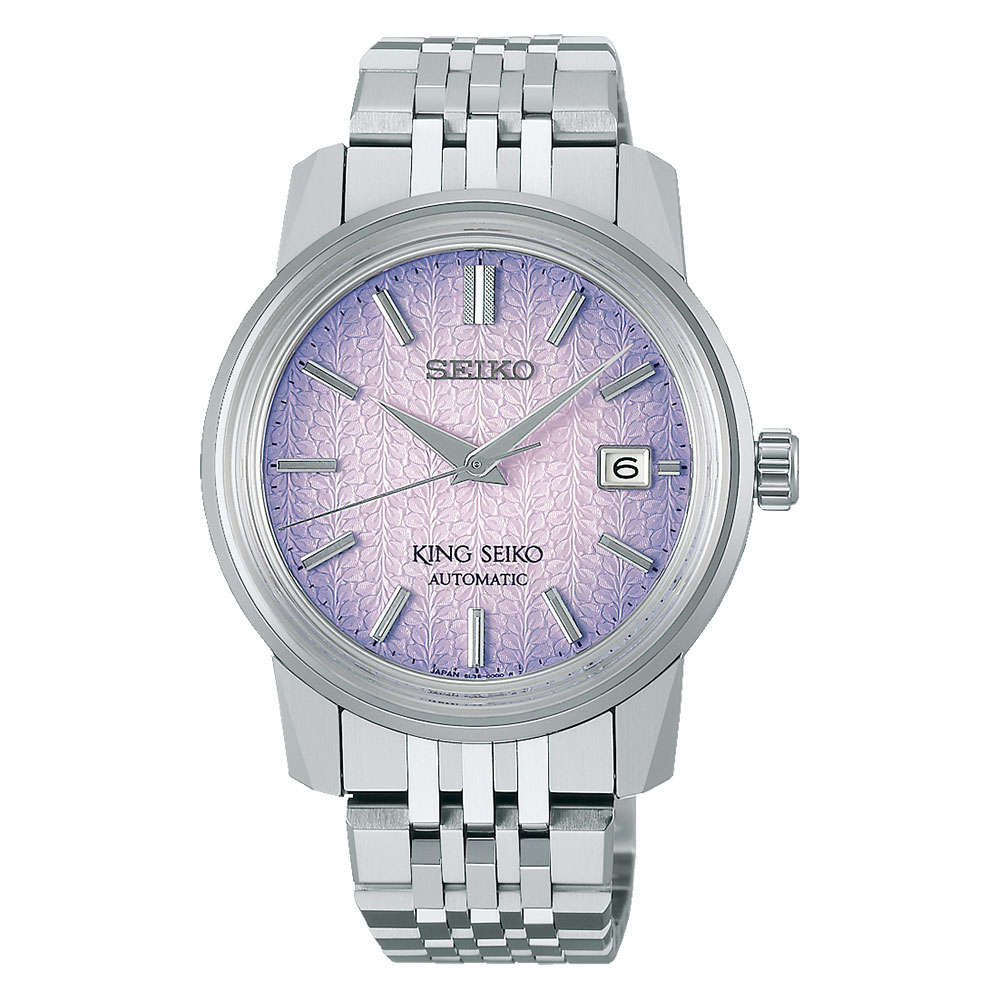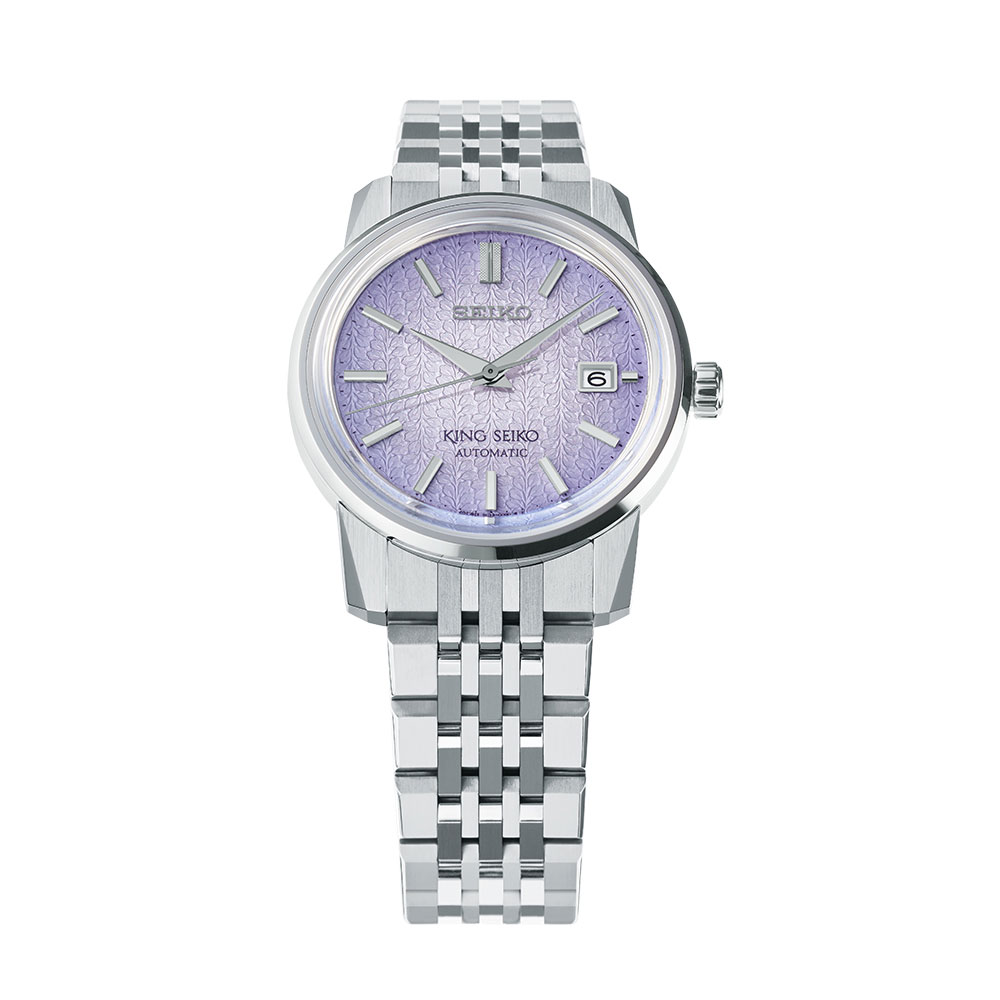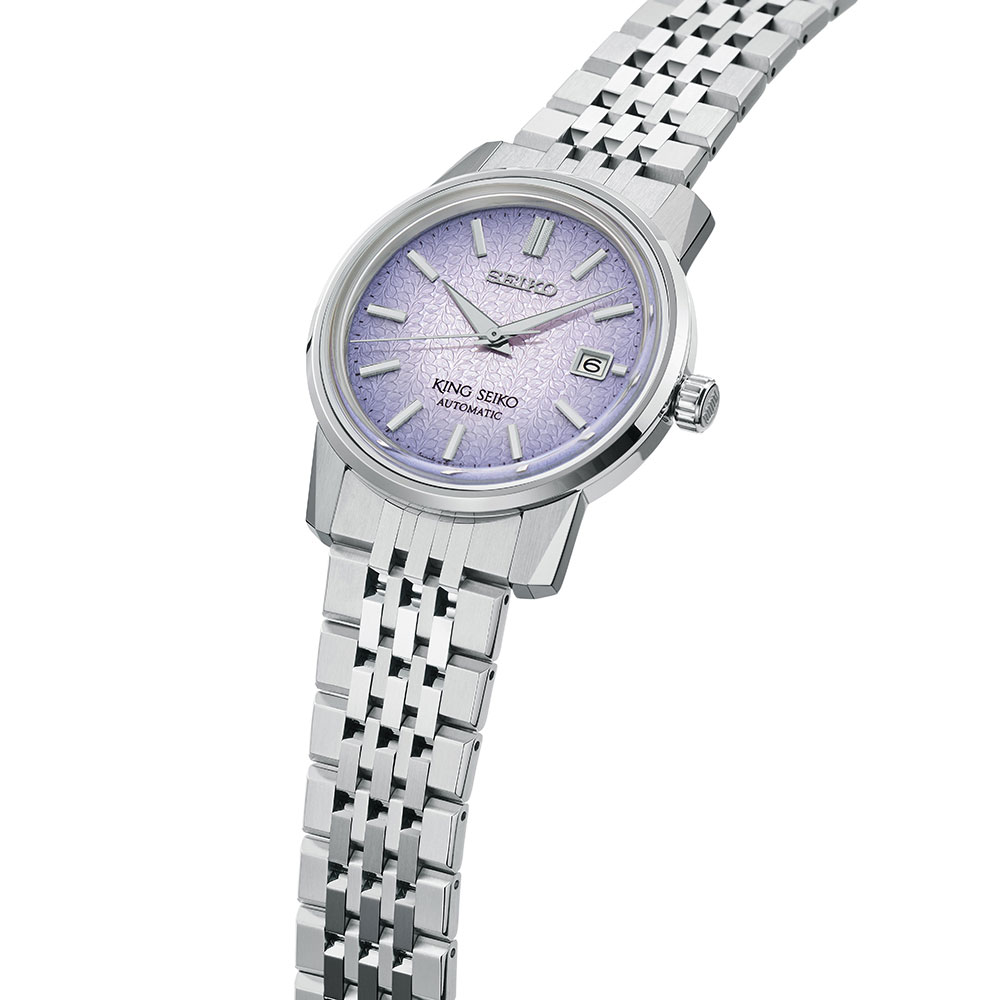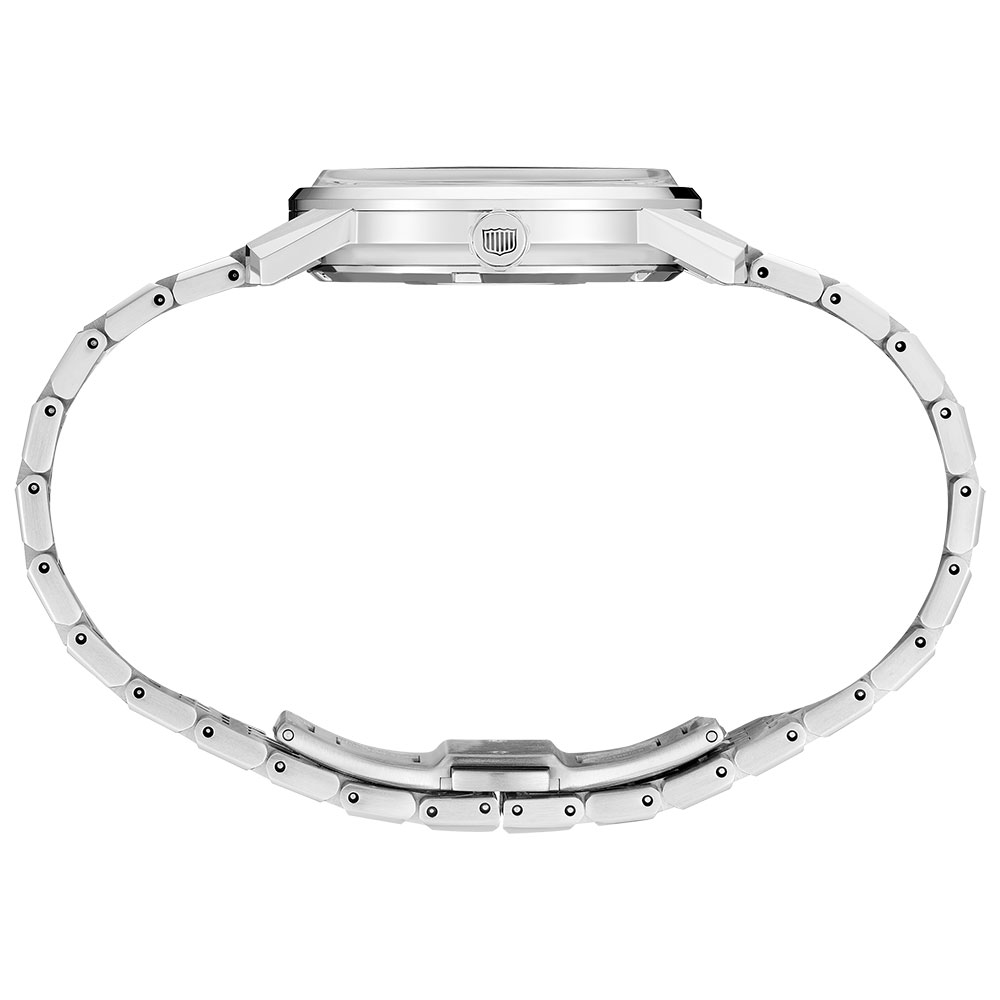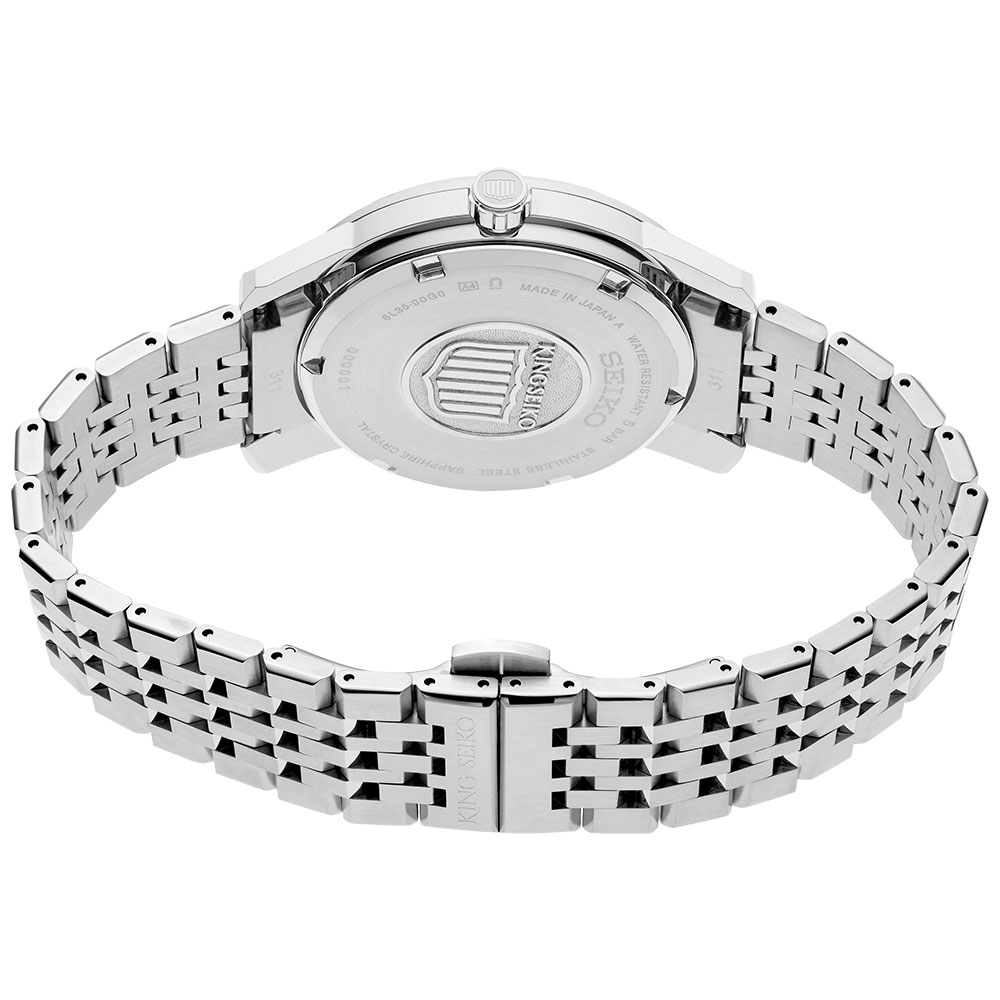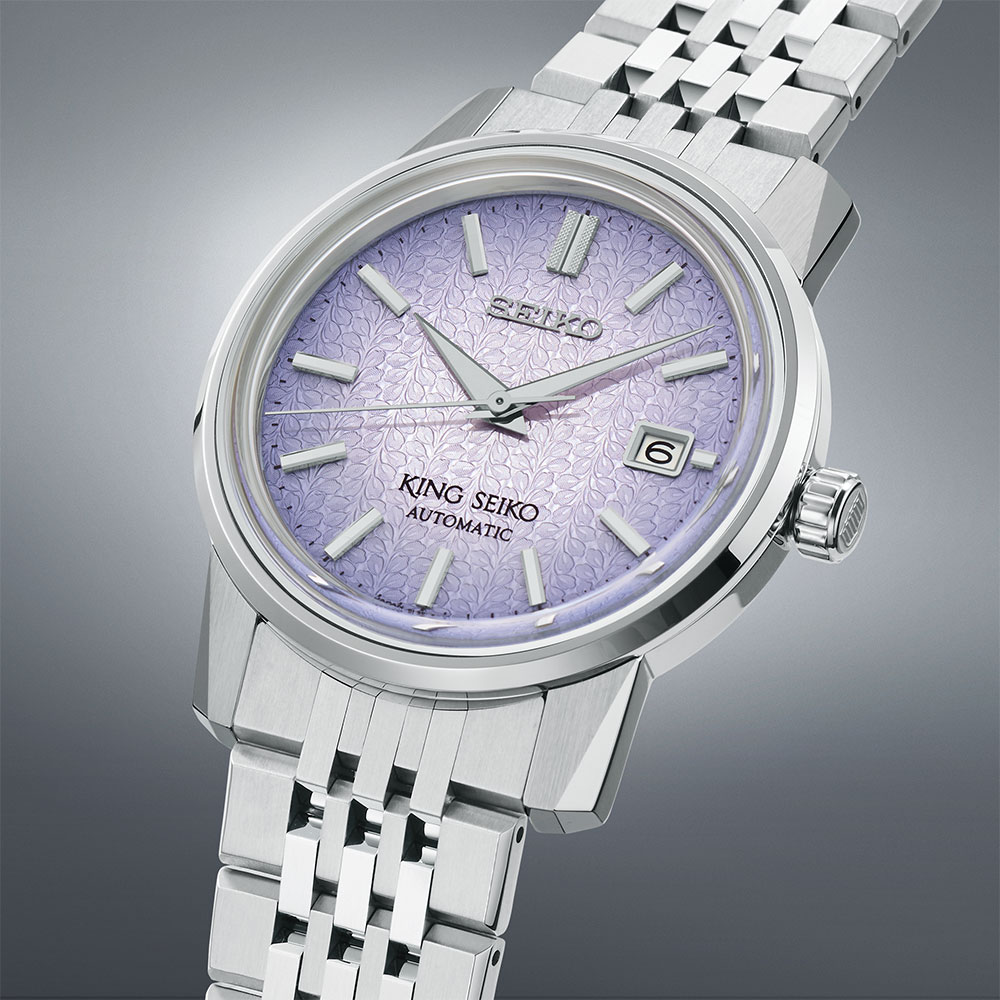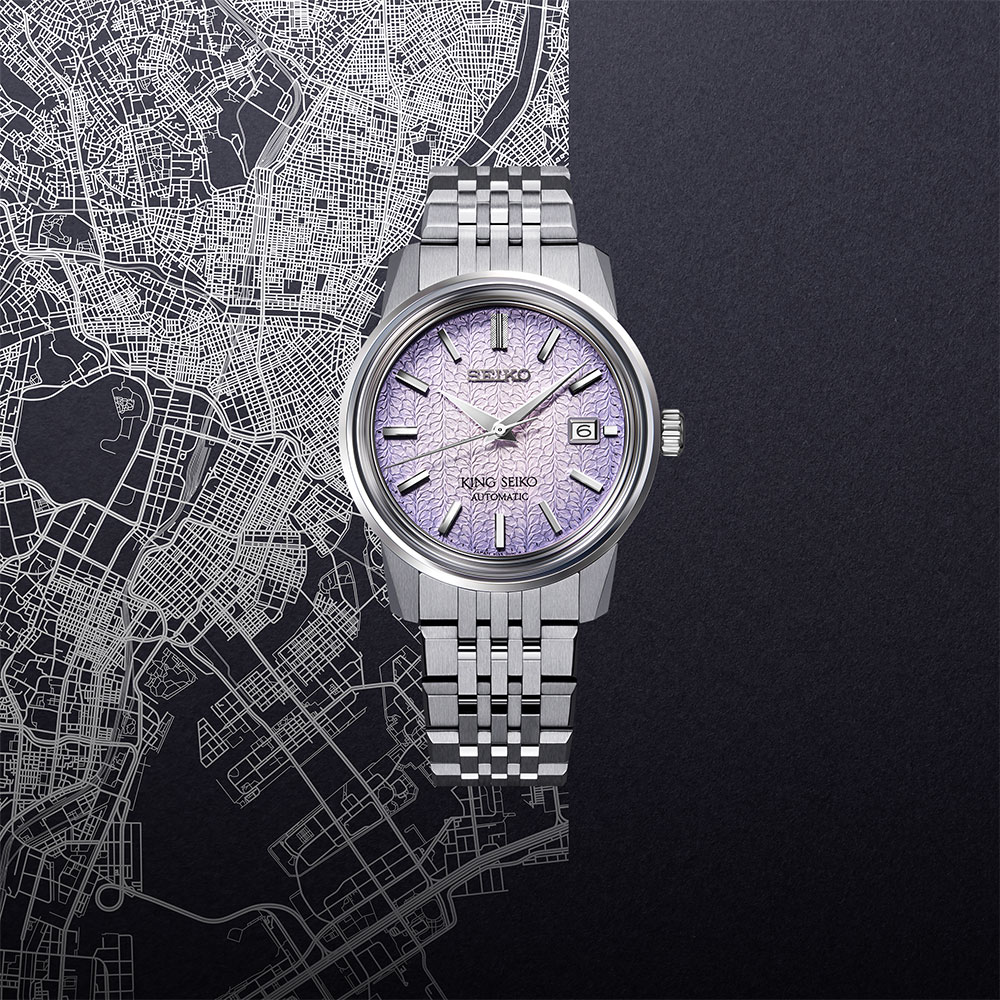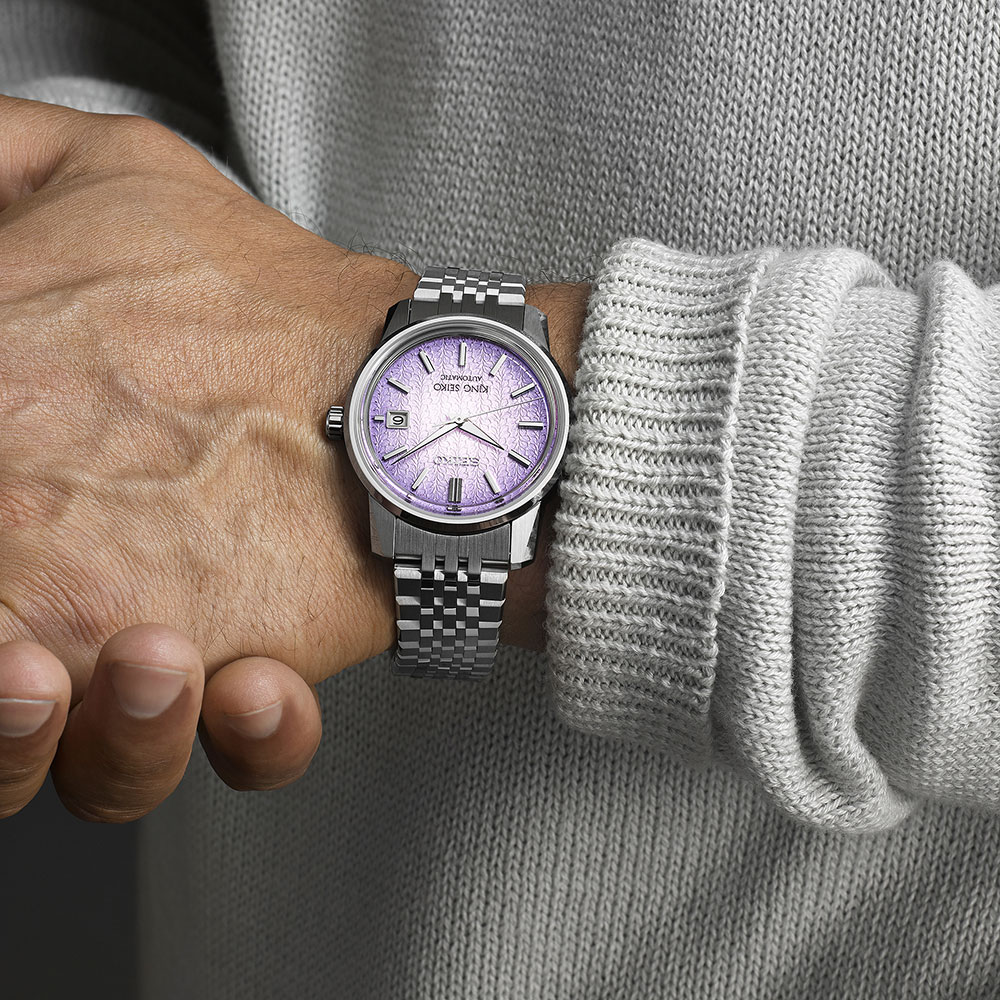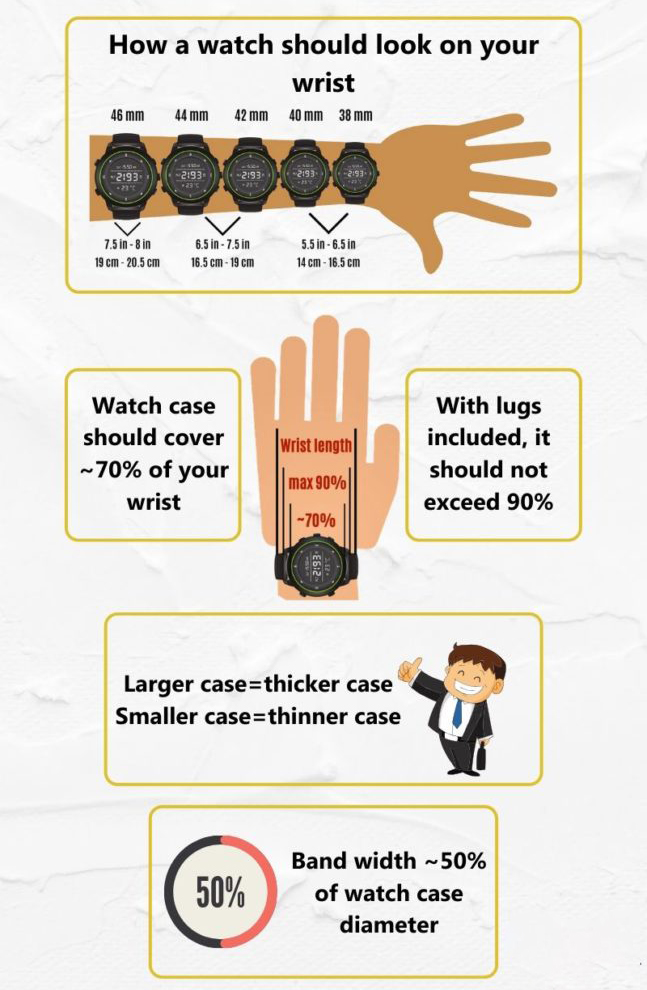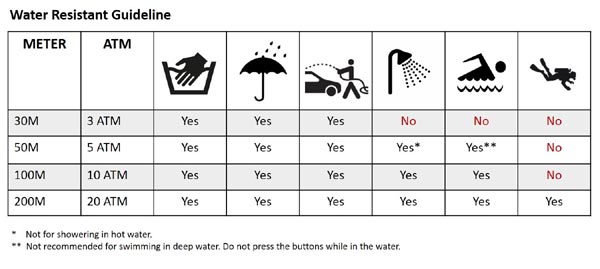Description
KING SEIKO SJE107 Specifications
| Feature |
| |||
|---|---|---|---|---|
| Driving system | Automatic with manual winding | |||
| Caliber Number | 6L35 | |||
| Case material | Stainless steel | |||
| Case back | Solid with King Seiko emblem | |||
| Band type | Bracelet | |||
| Band material | Stainless steel | |||
| Band color | Silver tone | |||
| Band width | 19 mm | |||
| Clasp | Deployment with push button release | |||
| Dial color | Gradient light purple with wisteria flower pattern embossed with textures inspired by ukiyo-e prints from the Edo period | |||
| Glass material | Box shaped sapphire crystal | |||
| Glass coating | Anti-reflective coating on inner surface | |||
| Hands | Grey silver tone hour, minute and second hand | |||
| Dial markers | Grey silver tone batons with double baton index at 12 o’clock position | |||
| Second markers | Minutes markers around the outer rim | |||
| Bezel | Fixed silver tone stainless steel | |||
| Calendar | Date display at 3 o’clock position | |||
| Crown | Silver tone screw down with King Seiko emblem at 3 o’clock position | |||
| Function | Date, hour, minute, second, stop second hand | |||
| Accuracy | +15 to -10 seconds per day | |||
| Magnetic resistance | 4,800 A/m | |||
| Vibration | 28,800 vibrations per hour | |||
| Drive duration | Power reserve approximately 45 hours | |||
| Water resistance | 5 bar water resistance (50 meters / 165 feet) | |||
| Size | Diameter 38.6 mm x Thickness 10.7 mm | |||
| Lug to lug | 45.8 mm | |||
| Weight | 130 g |
KING SEIKO SJE107 Features
The Japanese concept of ‘Ukiyo-e’ is a form of Japanese artistry which began in the 17th century. The images are expressed in the form of woodblock prints or paintings of traditional cultural Japanese scenes – usually featuring Kabuki performers, Sumo wrestlers, historic scenes, folk tales, landscapes, or nature. The dial of this King Seiko timepiece is inspired by the nature found in Kameido, the where the King Seiko brand began, designed into the form of kiyo-e.
The ‘Tenjin-Fuji Violet’ features a new wisteria flower pattern in a pale violet gradation. The unique lavender-colored dial takes its inspiration from the Kameido Tenjin Shrine where wisteria were planted during the Edo period. These purple flowers hanging from the trellises in the Japanese garden are a visitor attraction during April and May. During the Fuji Festival, the wisteria are lit up at night, giving a purple glow to the area. Over hundreds of years these flowers have inspired artists from Hiroshige Utagawa’s “One Hundred Famous Views of Edo” painted in 1856-1859 to “Le Bassin aux nymphéas, harmonie rose” painted by Claude Monet in 1899.
Under a box sapphire crystal glass are a set of sharp Dauphine-style hands with multifaceted edges. It has a sharp, angular brushed finish case design and an intricate seven-piece bracelet.
Powered by the in-house 6L35 automatic caliber – Seiko’s slimmest automatic movement which is accurate to +15/-10 seconds per day, this piece has a power reserve of 45 hours.
Long live the new King Seiko: modernized elite watchmaking, yet its stately, dignified and majestically classic looks remain.
- 26 jewels
- Date display
- Solid screw case back
- Screw-down crown
- Fixed stainless steel bezel
- Stop second hand function
History of Seiko
The company was founded in 1881, when Kintarō Hattori opened a watch and jewerly shop called “K. Hattori” (服部時計店 Hattori Tokeiten) in the Ginza area of Tokyo, Japan. Eleven years later, in 1892, he began to produce clocks under the name Seikosha, meaning roughly “House of Exquisite Workmanship”.
The first watches produced under the Seiko brand appeared in 1924. In 1969, Seiko introduced the Astron, the world’s first production quartz watch, it cost the same as a medium-sized car. Seiko later went on to introduce the first quartz chronograph.

